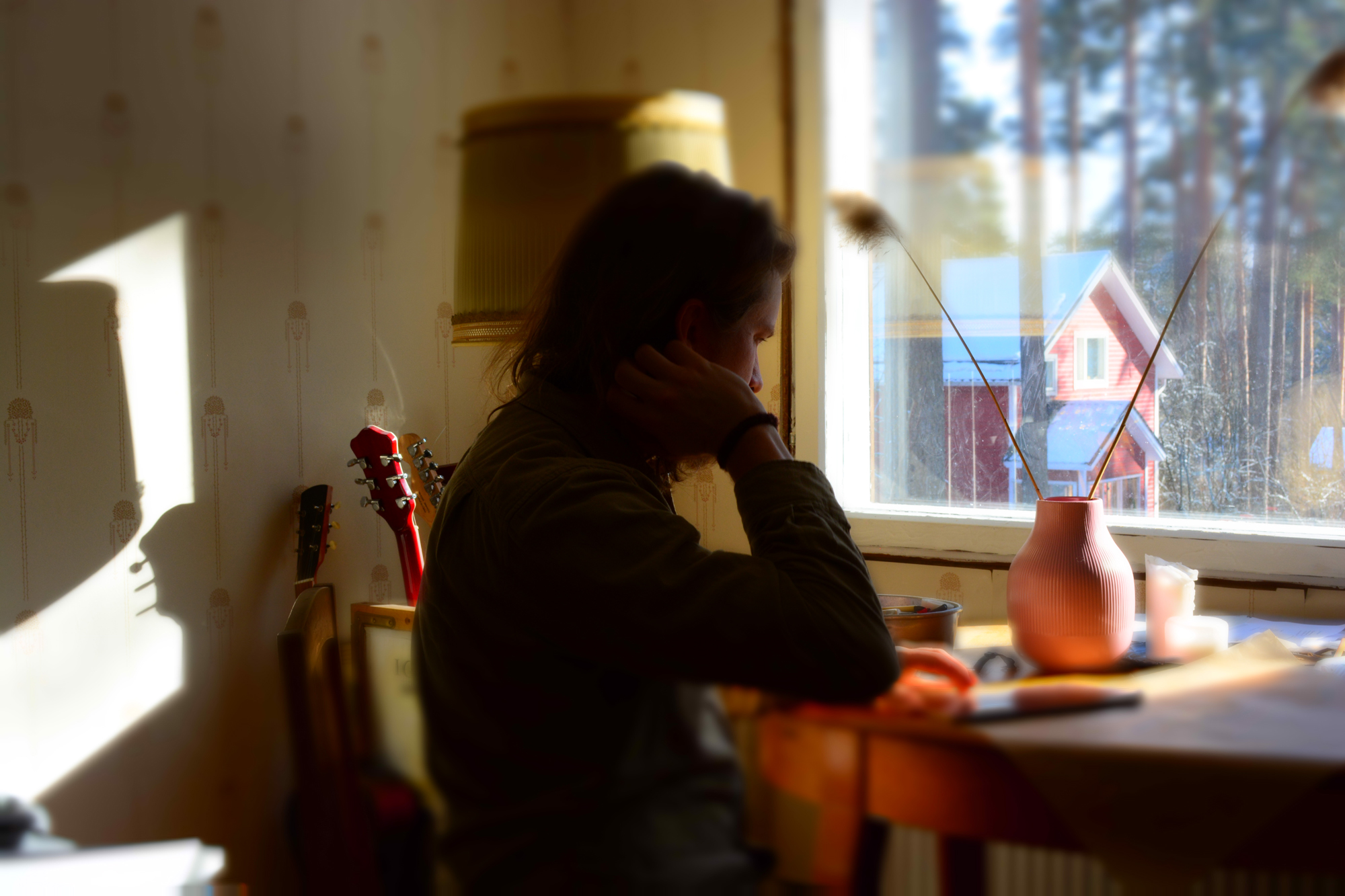The small surface area of a shoe fascinates designer Aku Bäckström

Shoe designer Aku Bäckström, who works in development at Samuji, was startled by the fast fashion in China. As a protest, he wants to embrace materials and manage his own projects slowly, surrendering to the process.
You have worked At Samuji for about six months now. How did you end up there?
My educational background is in shoe design, and I worked for Aki Choklat while studying at the Häme University of Applied Sciences. At that point, when training, I got an opportunity to travel to London and explore its art schools. In 2010 I applied to the Royal College of Art to specialize in men’s fashion and accessories, and to my surprise I was accepted. After graduation I’ve worked as a designer in Italy and China and taught shoe design. I’ve always appreciated Samuji. It’s somehow very easy to identify with, perhaps because of its aesthetics or value system.
Why shoes?
I guess I saw shoes as challenging and interesting objects: they provide an awfully small surface area to either succeed or fail with, so the design involves a great deal of detail. Then again, every day I find that someone has been able to stretch or break that area, and that is surprising. I’ve always been interested in whatever is made by hand, and it’s easy for me to try and make any object. I don’t only refer to tinkering but more to my interest – it’s not about showing off. That is my mentality to this day.

What do you prefer to design?
I work with development at Samuji, in a task not very typical for a designer. My work is about production-related event management, which is awesome. At the same time I’ve been more productive than ever outside my day job. I’m a wood fan, and last autumn I felled old pines in our garden and made them into boards. It’s a process of becoming one with the boards, in a way, and making them into something. I possess a bit of Twin Peaks Log Lady’s mentality. Instead of always creating impressive, industrial things, I want to personally focus on the opposite. Surrendering to a creative process and developing and working with creative content interests me in a noncommercial form, too, for example as an art therapist.

What is your signature thing as a designer?
At the Royal College of Art I understood that each designer’s own texture is always in a state of change, which was very liberating. But I’ve always liked handprints, whether visual or narrative. I collect things: I have dozens of old door handles and keys that my grandfather used to collect. I remember staring at them since I was a child and thinking that many people have touched them and left their marks on them. I want the objects that I make to also look like they’ve been used. We are renovating our house, and I’m going to use all the material I can remove for self expression. I found some construction paper in the walls and thought I’ll never be able to throw it away. My wife was not terribly excited about the idea. The smell – and the shades of colour look beautiful with perishable material. I’ve painted my kids on that paper, and I carry some of the sheets with me.
Anna Kokki, who was interviewed in this series before you, wanted to ask this: which moment in your career has changed or developed your way of working?
Although I feel I’m always going through a change, for sure there has been stronger pulsation, the last of which took place in China. When I was teaching in Beijing, a protest against fast bubblegum fashion culture quickly turned on within me. I saw that the students didn’t have to consider the materials at all, for example, because everything is almost immediately available through the internet. The design produces a pile of packing material and mess – it’s all too easy.
What came of this?
As part of a larger project, I made a pair of boots, sewing them by hand, deliberately slowing down the process. This surprised my students and allowed them to momentarily pause or at least slow down. I wanted the product to be purely the outcome of my creative process without thinking about the end result too much. What if we embraced objects more passionately instead of having it all very easily? This is why it’s so restful to work at Samuji now – acknowledging the surrounding world doesn’t feel so worrying morally. Perhaps that’s why I want to hug my trees, too; so as not to lose any single resource.

Who do you admire or follow?
Ossi Piispanen, a photographer, who lives in London and whose journey I’ve kept my eye on for a decade or so. He’s a courageous and free spirit. I detest the word status, but the state he has achieved is fantastic. As a photographer, Ossi clearly knows which story to tell through his medium. Although his calendar may be fully booked, his work always transmits his texture. Ossi has not taken the most travelled road but keeps challenging himself, and his approach beyond fear is admirable.
What would you like to ask him?
What is your next great unknown within photography?
Photos: I.G. Bäckström